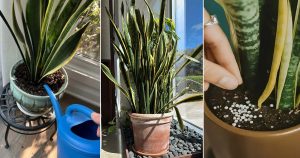Learn how to grow your snake plant in a rosette shape, which will not only replicate roses but also be adored by everyone.
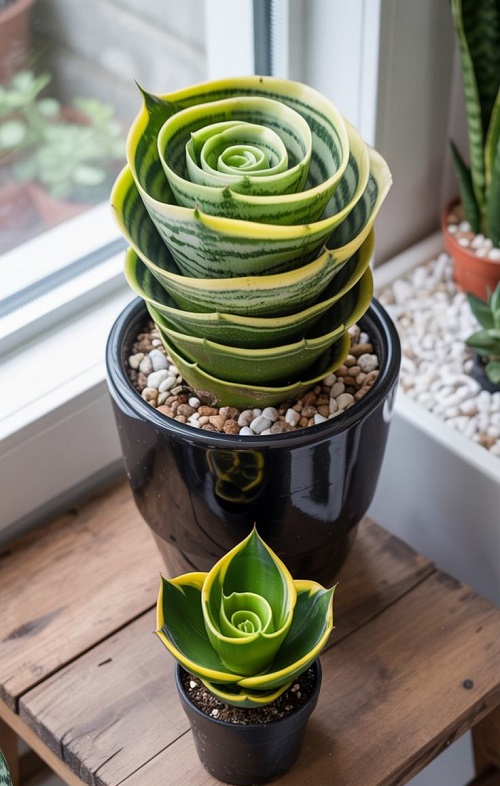
Everyone thinks that snake plants have tall and upright leaves, but not everyone knows that you can grow them into a beautiful rosette shape. They look neat, symmetrical, and perfectly fit small spaces. Did you know that some snake plants naturally grow in a rosette shape? Read ahead and find out what you have been missing!
How to Grow a Snake Plant in a Rosette Shape
1. Choose the Right Variety
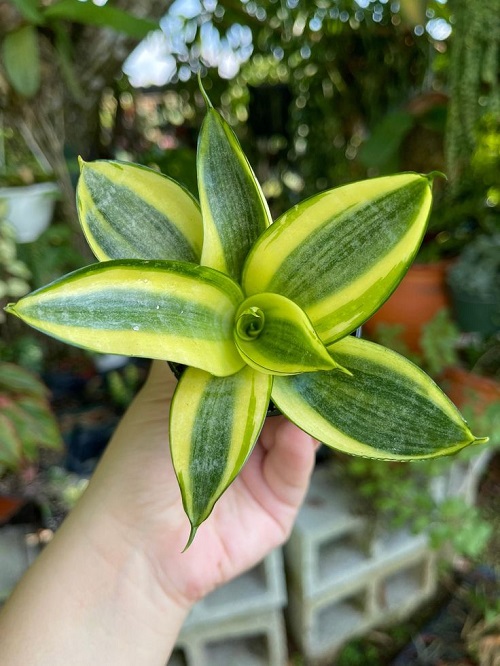
Some snake plants naturally grow in a rosette form. If you are aiming for a compact shape, opt for a dwarf variety. Consider using Sansevieria trifasciata ‘Hahnii’ or the Sansevieria ‘Golden Hahnii’.
But how much is too much when we talk about snake plants? So, add two more to your bucket. Sansevieria ‘Silver Hahnii’ or Sansevieria cylindrica are varieties that naturally keep their leaves short and arranged in circular layers, making shaping easier.
You can also experiment with hybrids, as many newer cultivars stay naturally compact and form tight leaf clusters without much effort.
2. Use a Shallow but a Tight Pot
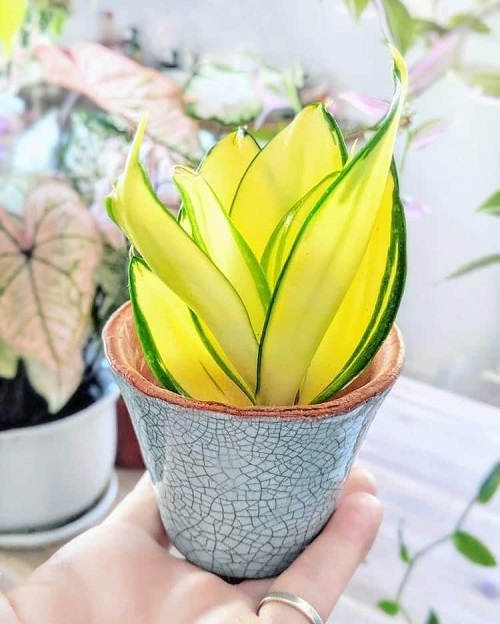
Rosette snake plants grow best when they are a little root-bound. A tight pot helps the leaves grow closely, keeping the shape compact. Use a shallow pot since rosette varieties have shallow root systems. Or choose a pot only 2–3 inches larger than the current root ball. This prevents the plant from spreading outward too loosely.
Avoid oversized pots at all costs because they push the plant to grow outward instead of staying neatly circular.
3. Provide Bright and Indirect Light

Light strongly influences the tightness of the rosette pattern. Bright, indirect sunlight keeps the leaves shorter, more rigid, and tightly packed. While low light causes leaves to stretch out, breaking the rosette shape. Place it near an east or north-facing window or use a grow light if needed, to manipulate the growing pattern.
4. Rotate the Plant Weekly

To maintain a symmetrical rosette, rotate your pot at least once every week. This prevents the leaves from bending toward a single light source or only one side from growing. This will help keep the circular shape of the snake plant in check.
A simple quarter turn is enough—think of it as helping your plant strike a perfect 360° pose.
5. Avoid Deep Watering into the Crown
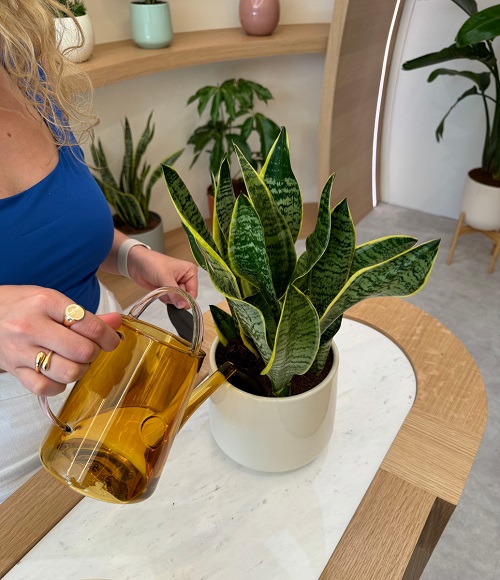
Pouring water into the center rosette can cause crown rot, destroying the shape. Always water either around the edges of the pot or only when the soil is fully dry, and that too sparingly. Dry soil will help encourage slower, controlled, and compact growth.
6. Pruning Method to Maintain Shape
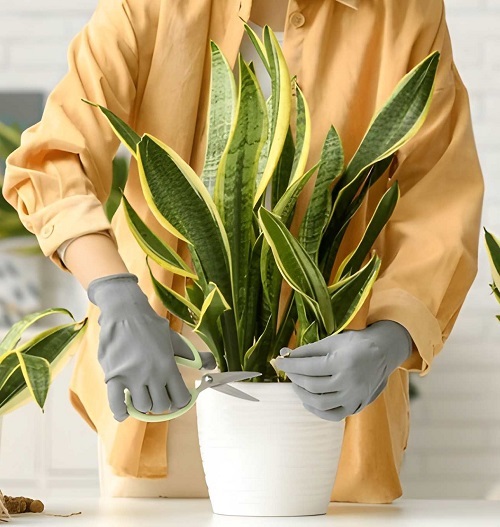
If a leaf grows leggy or sideways, gently trim or remove it from the base. This will help the plant grow again the next time and in symmetry. Use sterilized scissors and remove only one or two leaves at a time for this.
7. Propagate Only the Most Symmetrical Pups
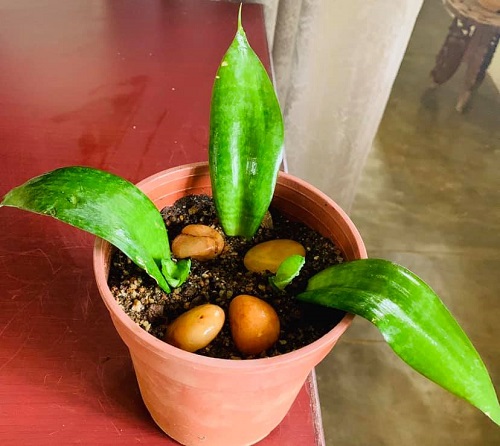
To maintain the rosettes, separate pups that show a circular and compact leaf arrangement. Then, replant them in tight pots. Pups from species that grow in rosettes are genetically inclined to maintain that shape.
Avoid propagating pups with widely spaced leaves because they will likely grow loose and open instead of forming tight spirals.
8. Control Fertilizer Use
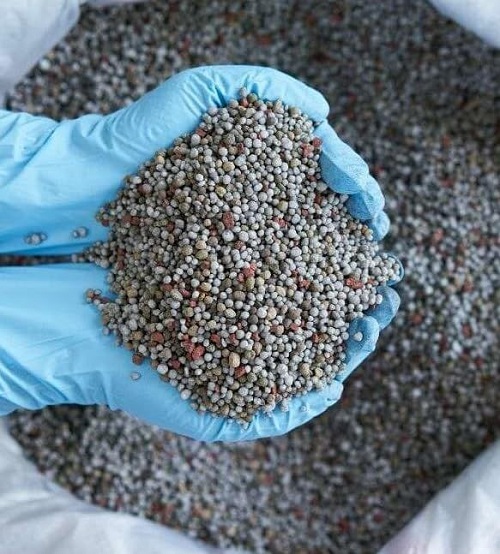
Too much fertilizer causes fast, tall, and leggy growth. So, feed only once in spring and once in late summer using a diluted succulent fertilizer. This slow and nutrient-controlled growth will help form tighter leaf spirals.
Stick to low-nitrogen blends, as nitrogen pushes vertical leaf growth instead of compact layering.
9. Use a Fast-Draining Mix
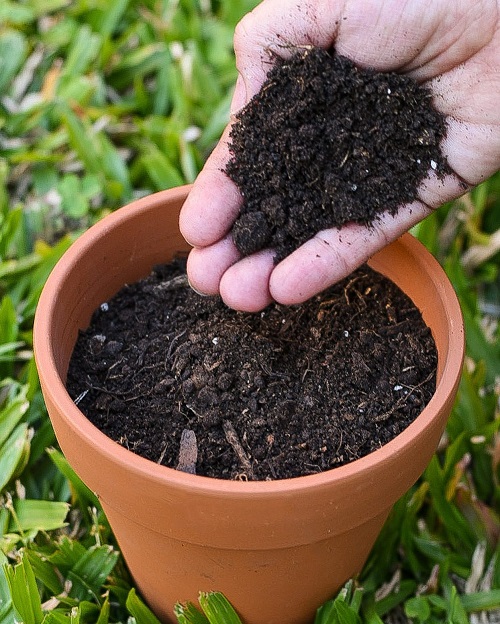
Soil affects the space between leaves. A well-draining sandy succulent or cactus mix prevents excess moisture, keeping leaves short and compact rather than stretched or leggy.
For best results, mix one part potting soil, one part perlite, and one part coarse sand—this combo keeps the plant firm, stable, and tightly structured.
Growing a snake plant in a rosette shape is all about choosing the right variety and giving it appropriate care. It is not something very complicated, since you have done this before, but definitely something that requires patience. Let us know how this journey has been for you in the comments below!




